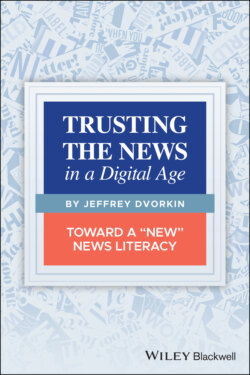Читать книгу Trusting the News in a Digital Age - Jeffrey Dvorkin - Страница 30
The Dangers of “Clickbait”
ОглавлениеMany media organizations, especially broadcasters, try to entice their audiences through “clickbait.” Clickbait is a link or headline that catches the eye by promising interesting content, but it then fails to deliver. According to TechCrunch, the purpose of clickbait is to generate page views because “[m]ost sites use traffic numbers like page views or unique visitors to bill advertisers and measure their general success” (Escher and Ha, 2016).
Clickbait works simply because it does attract eyeballs. The assumption seems to be that audiences will stay for the serious content after gorging on the fluff. Many media websites seem to be particularly smitten with clickbait, even though their journalists complain, and the public occasionally resents this waste of the journalistic efforts and reputation.
But it can earn money for a media company, so the public seems willing to tolerate it.
No technological change can ever be reversed. Occasionally, it can be slowed, even questioned. Can the effects of the digital culture be made to work on behalf of the culture, rather than against it? How can the better aspects of traditional journalism be made to fit inside the technological inventions that are being produced constantly? If journalism is to survive, then it has to resist digital culture's worst qualities (listicles, cat videos, celebrity sightings, and porn) in order to let digital culture offer what it can best provide.
